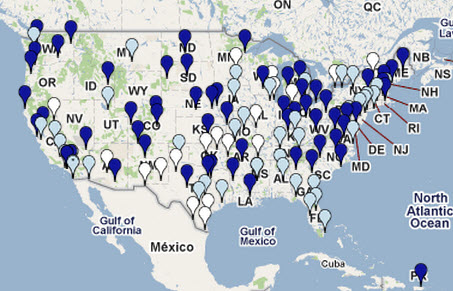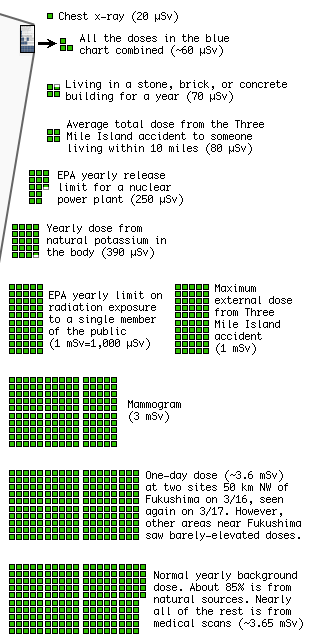Nuclear radiation paranoid’s handy reference [UPDATED 3/22]
March 21, 2011 by Amara D. Angelica
The Likely Radiation Distribution in Japan (March 19)
Added 3/22:
Iodine from plant detected in Tokyo: .046 µSv/hr. (438 µSv per year — about 4 chest x-rays); Fukushima Pref.: 21.9 µSv/hr. (191,844 µSv per year or 1918 chest x-rays).
Dealing with radiation fears, potassium iodide requests: side effects include nausea, diarrhea, allergy, interference with the body’s normal production of thyroid hormone.
Iodine facts (American Thyroid Association)
EPA RadNet (March 20, 2011): “As of 1:00pm EDT EPA’s RadNet radiation air monitors across the U.S. show typical fluctuations in background radiation levels. The levels detected are far below levels of concern.”
FDA: Frequently Asked Questions on Potassium Iodide (KI)
Note: 1 cGy=1 rad
Concentrated sources of Iodine include kelp (best), yogurt, cow’s milk, eggs, strawberries, mozzarella cheese, fish, and shellfish.
Added 3/22:
U.S. Nuclear Regulatory Commission: “Doses in Our Daily Lives”: medical procedures, food, Personal Annual Daily Dose Calculator. On average, Americans receive a radiation dose of about 0.62 rem (6200 µSv) each year (100 rem = 1 Sv = 1000 mSv = 1,000,000 µSv).
xkcd Radiation Dose Chart (excerpt)

